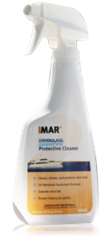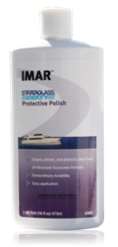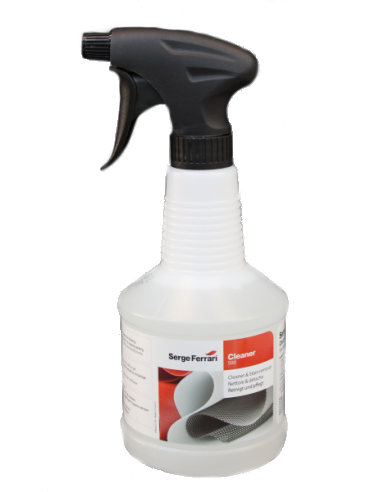Maintenance
Care and cleaning for Sunbrella and Sunbrella Plus
One of the best ways to keep Sunbrella fabrics looking good and to delay deep or vigorous cleanings is to properly maintain the fabrics. This can be accomplished by simply brushing off dirt before it becomes embedded in the fabrics, wiping up spills as soon as they occur or spot cleaning soon after stains occur.
Re-treating the fabric
As part of the finishing process, Sunbrella fabrics are treated with a fluorocarbon finish, which enhances water repellence. This finish is designed to last for several years but must be replenished after a thorough cleaning. Based on test results, Glen Raven recommends 303 High Tech Fabric Guard™ as the preferred re-treatment product for Sunbrella fabrics. Fabrics should be re-treated after thorough cleaning or after five years of use.
Applying 303 High Tech Fabric Guard 303 should be applied to Sunbrella fabrics after each thorough cleaning, which typically removes the original finish and reduces the fabric’s water repellence.
- Clean Sunbrella fabric
- Allow Sunbrella to completely air dry.
- Apply 303 Fabric Guard in a well-ventilated area following instructions on the container.
- Apply 303 in a thin, even coat and allow fabric to dry completely.
- Apply a second thin, even coating of 303. (Two light coatings are more effective in restoring fabric water resistance than a single heavy coating.)
The do’s and don’ts of maintaining clears
The key to getting a long life out of your clears is to keep the vinyl surface sealed from damaging environmental factors by washing and polishing at least monthly. Strataglass recommend weekly!
- Follow the manufacturer’s advice when maintaining clears as not all polishing and cleaning products are compatible.
- Use two micro fibre towels. One to apply product and a second to buff.
- Do not get sunscreen on the clears – it will permanently cloud the vinyl surface.
- Never use regular window cleaners, detergents, abrasives, petroleum-based products, chemicals or alcohol on clears. They will break down the protectors in the vinyl.
- Only use mild PH neutral soaps diluted in water with a soft cleaning mitten or sponge.
- Do not rub or wipe salt crystals or grime off without water and soap. If you do the clears will scratch.
- Do not use water repellent products. They damage the external finish.
- Do not fold clears. It will increase the risk of cracks happening. Store clears flat or roll them up with an old white bed sheet between layers.
- Do not store clears with anything on top because zippers and life jacket buckles can leave impressions in the vinyl. If you can, it is best to leave clears on so they hold their shape and size.
- Never store clears when they are wet. It can make them go cloudy and white.
- Lubricate zippers and fasteners periodically using a clear silicone spray.
- Keep the flybridge area well ventilated to reduce mildew build up. If using bleach to remove mould ensure you water blast it off thoroughly, otherwise it will rot the stitching unless Teflon thread has been used.
Basic steps to cleaning clear
- Wash both sides of clears with fresh water (hose pressure only) to remove salt and dust.
- Next use warm soapy water and a soft cloth to clean. Gently rub both sides of clear.
- Rinse thoroughly. Remove all soap residue.
- When dry use the appropriate products Plexus, Vuplex IMAR Strataglass Protective Cleaner, IMAR Strataglass Protective Polish, and follow the instructions on the can.
Also try to remove bird droppings as soon as possible.
Cleaning and Maintaining your Zippers
Keep them moving, this will help to prevent salt and dirt hardening and seizing up your zippers, also make sure to rinse salt water off after you have been out to halt corrosion. If you feel its necessary use a lubricant, ideally use a dry silicon or water-based lube, candle wax or bee’s wax.
If you have stuck and corroded zippers, try hot water and vinegar to dissolve the oxide/salt and free the zipper. As with everything else just keep everything clean and rinsed, prevention beats solving the problem later.
Cleaning and Maintaining your Vinyl
Clean your seats and cushions with mild detergent and clean water or a commercially made vinyl cleaner from a chandlery (using a soft bristle brush for stubborn grime), then rinse and dry. Pay extra attention to piped edges, where pore-clogging dirt collects – you may want to use a toothbrush or nailbrush to clean these areas. Make sure to rinse away any excess cleaning solutions and thoroughly dry.
Always use non-toxic cleaners for vinyl. Cleaning products containing chlorine, alcohol and/or ammonia will chemically dry your vinyl and promote premature cracking and peeling, while greasy cleaners, dressings, and gloss-promoting products will clog the pores and seal-in existing dirt.
Some people use bleaches, but this is too harsh for the vinyl and will cause it to break down over time, you also run the risk of bleaching other fabrics or carpets on your boat so steer clear. Bleach will also deteriorate the stitching.
Mould & Mildew
When you do get mould there are options, what you need to remember is many cleaners will get rid of the mould short term, if you do not kill the spores the mould will return again and again. Magic Eraser often works quite well at removing stains from the surface of marine vinyl. Before using specialised cleaners, try scrubbing the stain with water and a Magic Eraser pad. Use care when scrubbing. Do not scrub off or sand down the vinyl. Mix a solution of Mould & Mildew Stain Remover as per instructions (IOSSO Mould & Mildew Stain Remover is a recommended product). Wet the area with the mix then let soak for about 15 minutes. Scrub the area with a sponge or soft cloth. For stubborn stains try using a Magic Eraser to scrub the stain off.
For mould prevention, a mixture of 1/2 tsp clove oil in 1 ltr of water will kill the spores (Not just clean up the mould, although it will do that too). Spray the mixture on and leave for 20 minutes then wipe off. You can then give it another light spray and leave to dry. To keep mould growth under control, try to carry out the method every 12 – 16 weeks.
To kill mould, you can also use a 50/50 mix of white vinegar and water along with baking soda, sprinkle on the baking soda and wash with the vinegar solution.
Cleaning & Maintaining Your Carpets
A high pressure water gun is a great option, some people use a carpet cleaning solution (vinegar works well), scrub it in then rinse with the high pressure cleaner, some people go to a car wash and use the water and soap guns there. Make sure you use from a distance though, getting right up close can damage the adhesives holding your carpet down.
You can also opt for a wet dry vac, if you do not have one the supermarket hire ones are great and easy to use. This way you can pull the water back out after cleaning.






